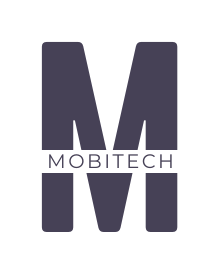On Linkedin, you can create an audience aligned with your objectives; build a reputation, generating credibility to position the value proposition of your brand or the brand of the venture, institution, or organization you lead. Let me tell you how and why you should consider LinkedIn, as a strategic, but first, some facts:
- 730 million users worldwide. Most of them are professionals and companies.
- 30 million companies are present on LinkedIn and developing their social selling strategy.
- 40 million users access the platform at least once a day.
80% of B2B sales on social networks are made on LinkedIn. - 50% of traffic to B2B websites originates on LinkedIn.
97% of B2B business marketers choose this social network for their strategy. - 52% of B2B buyers make their decision based on LinkedIn.
Now, if you are asking yourself “How to write articles for LinkedIn?” here are my 10 Tips to break it down by writing articles for LinkedIn.
The first thing to define must be the strategy. That is; What are the purpose and specific objective that I want to obtain in return for the investment of time and value that I will provide through the creation of content?
For example, You may say… “I want to create a personal brand and position myself as a reference”. Yes. Ok. But what does that mean?
Probably if you lead new product or service launches, you want to position them for marketing. Or, your role as a manager to position yourself as a reference in the market. You may also be the director of an advertising or design agency looking to expand markets. You may be the leader of a research project, a curator, a director of a museum or institution, NGO; who wants to position and publicize an exhibition, a project, etc. Or a media leader who seeks to make visible the actions carried out with the idea of generating networking that contacts you with other media and referents at the international level for partnerships or new commercial agreements. Or a teacher, stage director, or choreographer who is looking for new opportunities for collaboration and production.
In any case, you must establish the specific objective to which you aspire so that your efforts and investment in content creation are subordinated to it.
For that, it will be necessary to define Objectives and Key Results (OKR) that will allow you to develop a content plan aligned with your objectives, which you can then measure through Key Performance Indicators (KPIs). In other words, you will have to establish your OKR, which I recommend you do as follows:
“I will perform (objective) to achieve (key result) in (period) and the performance index will be (measurement).
Once you have established your OKRs, you can then begin to dedicate time to a content strategy aligned with those objectives. In other words, you will no longer create random content, but rather, it will respond to a content schedule aligned to the different objectives. This does not mean that you cannot feel free to write as you wish, but that your writing is focused on leading your readers toward your goals and objectives.
Therefore, if you want to establish a content schedule, you should consider what the order will be, for example, through a table of contents. If I want, for example, to be hired by universities, institutions, or companies for my work as a trainer to give talks or consultancies to companies, I will emphasize my experience in teaching, and my own experience as a leader of projects, or companies. On the other hand, if my goal is to export service to a new market, I can, for example, create content related to the region or area I want to reach, establishing differential value or other.
Now, something important will also be the tone or focus of the content (In another opportunity I will talk about the research of content according to the target audience. It is not enough to determine the subject matter); the way it is narrated will undoubtedly be defined for whom my message is intended.
That is to say, the topic “My experience training dancers” may have different qualities if I want to convince/seduce dancers who are being trained with my experience, or if, for example, I make programmers, career directors, etc. see the value I will bring to their institution and therefore, to the function they perform in these institutions. If, on the other hand, I am a curator, director, or programmer; I will try instead to show how I contributed value to an institution or organization, through, for example, the commitment of the audiences and artists who were involved in the project I led.
To summarize: Once I have defined objectives, the results I expect to obtain, deadlines, and how I am going to measure them. And having determined my target audience, I can then begin to structure the article.
10 Tips For Writing Articles On LinkedIn
1. Title, Theme, Or Topic
Problem to be solved by my target audience, the topic of interest, or the topic in which the value I will contribute is inscribed.
That is if I am the founder of a startup that offers immersive learning services in the metaverse, and I am looking for angel investors, it will probably not be useful to create content such as “How to get angel investors” because, somehow, I will be generating content for an audience that is not related to my goals, because it is in my same circumstance, besides being too generalist. On the other hand, if I develop content that tells about the increase in the use of my technology, or that the immersive learning business will grow 80% by 2030, I will probably be closer to positioning my message to the right audiences.
However, I must always ask myself: “How can I help my target audience, what are their needs, is this a question they are asking, a problem they are having that I could solve, what is going on in my context?
It is very helpful to write down what problems I solve in my day-to-day life, and what value I bring to others; this will possibly be content. The content can be entertaining, informative, inspirational, educational, perspective and contextual, trendy, etc… and it will depend again on my strategy and the audience I am targeting.
This same title will be the one that will be positioned at the SEO level in the usual searches of my target audience in browsers. Therefore, understanding how they are searching for what I offer will also be key to thinking about the contents and their titles.
In all cases, the topic, tone, and order of my content will always be determined by my objectives and purposes. These, of course, can vary, but those changes must be oriented to concrete results, otherwise, I will not be able to measure effectiveness. That is, if I am achieving or not, what I propose is through the creation of content.
Deadlines for growth must be realistic. Everything is time, money, or luck. If I don’t have time, I will have to invest money. If I don’t have money, I will have to invest time. The rest is luck… and we already know; it may or may not work out.
2. Coupet
If the title is the hook; the headline should hold the attention with the promise of what the article is going to be about, presenting the conflict, and the topic I will delve into, with just a dose of context that allows me to generate, for example, intrigue.
3. Introduction
Like every story, it needs a beginning. And this is no exception. There is no single way to start a story. The contents that I have seen that work best are those that start from one’s own experience; and that are explicit with this, managing to empathize emotionally with the audience. Regardless of the type of content, it must generate an emotional reaction in the reader.
In the case of articles that aim to create a narrative that includes and transcends concrete information, it will be important, I think, to give value to the notion of “story”; to tell a story. And a story, it is known (Thanks Aristotle!) has instances that we can take into account; beginning — development — conflict — climax, and denouement.
But we will only take it into account as long as it is useful to convey what we want to convey and according to the objectives we want to achieve. That is to say, once I have this structure in mind, I can disarticulate it as necessary. If you remember how I started, you will see that I began with: “I am going to tell you the story of how I learned to…”, or “I am going to tell you the secrets I told to…”.
But now, I have moved away from the story to instead reinforce the more “educational or informative” elements.
Now; very few people stop at a first approach to the content, to read long articles (I discourage this because I bet on consistency and this article is proof of that… if you keep reading, you are the reader I am aiming at) but when I want to sell; I know that this type of more informative content yields less than the emotional one… at least in the short term, at least.
Because, in the medium and long term, it is possible to establish more committed connections and links with my specific readers; which makes them more qualified.
4. Conflict & Climax
If in the intro, the dream was presented; the growth or challenge that lay ahead. In this instance, what is opposed to that may appear? While the climax will be that instance of a higher level of intensity: where we will doubt if the conflict, the problem, or if it will bring the information or the promised solution will be solved.
Or in the case of informative content such as lists, it will be the progress through instances in the flow of knowledge. Longing to get to point 10 will be what stimulates movement and maintains attention. The fewer points, the more guarantee that the reader will follow the whole path. Playing to 10 is to play perhaps to have more to develop and appeal to the symbolic connection with some specific numbers such as; 3,5,7,9,10, 12, etc. ….
5. Images
The image can be an article header image in the case of a Newsletter or an image that graphs an article. In all cases, both images and videos help to retain the reader’s attention and work as well as bold letters and quotes not only to “air” or “intrigue” the content but also to better position it in search engines. In addition, images must be SEO optimized, of good quality, and, if possible, eye-catching.
6- Conclusion
Once the story has been told; the conflict or problem to be solved, whether it is technical or at a narrative level; we must provide the solution. Trying to pass our experience as protagonists to those who are reading us. In such a way, it passes from a passive role to an active role. For example, if the conflict or problem to be solved was: “How to create a freelance art company?
7. Call to Action
If what you contributed was of value, this is the moment to invite the active participation of your readers, according to the instance or phase in which they are in the content funnel with a view to conversion or achievement of the objectives you set out.
If, for example, they are in an initial phase of recognition of your project or brand; you will want them to move to the next phase of greater knowledge, so perhaps you invite them to listen to a podcast, to subscribe to your newsletter where you will give them more valuable content frequently, or complete a lead magnet form (such as an e-book, or other) that will allow you to obtain qualified data.
Then, you can increase the level of engagement with your audience according to your objectives. A call to action, for example, could be:
“If you liked this content, don’t forget to recommend it and subscribe to my newsletter”
Or an option oriented precisely to the topic on which you have just provided value such as:
“If you have understood all that is at stake when it comes to writing your articles, and you don’t have time to write them yourself, contact me I will be happy to work to write the articles for you so that you can get busy continuing to grow your business.”
8. Edit
Little by little, I am becoming more disciplined and rigorous in this instance. The truth is that many times, due to urgency, enthusiasm, or even because we are not sure of the value of the matter, we miss this key step. Personally, editing takes me as much time as the previous research and investigation, and even more than the writing itself. But the editing process makes the difference between a quality article and a so-so one. I am not only referring to correct grammar, spelling, and typing errors but also to elements that make the cohesion and syntax of the material, which I think is even more important.
As I said before. It is time to share the content in your networks and those of your company, institution, or organization. Even on Linkedin itself, through a post. In the post, you should be synthetic and draw attention to the first two or three lines that will be visible; to the point that from those two lines, the user will choose to “click” on “see more”, or pass by. If the article includes or involves other people, do not forget to tag them so that they can participate in the conversation and interact with it. And finally, even if it is known, include the hashtags of the sector or a specific topic in which your article and your strategy are included. It is not magic and will not make a difference in the short term if your article is not of quality, nor does it provide concrete value. But, if it is, it will make a difference in the short, medium, and long term, as it is “evergreen” content.
Content must be long-lasting. It’s not enough to upload it once and then forget about it. You have invested time and effort in its creation, so… aim for it to have a long life. Make it sustainable, sustainable, and perdurable. That is, reuse it by adapting it to other formats and channels; to a Twitter thread, an Instagram post, a podcast, or even make variations on LinkedIn itself. Finally, do not forget to interact with those who comment on it, and do not be afraid to even share links to it, through comments on other posts that may be related to the conversation and where your article can add value…
Well, I have extended more than recommended but being that this will be later content that I will reuse in various formats, I don’t worry about the topic for now and if you got this far, I’m glad to have been able to provide you with valuable content. I also take this opportunity to tell you that finally next week, I will share with you some inbound marketing and content marketing strategies that can help you to attract traffic to your website and then, convert.
Also Read:




